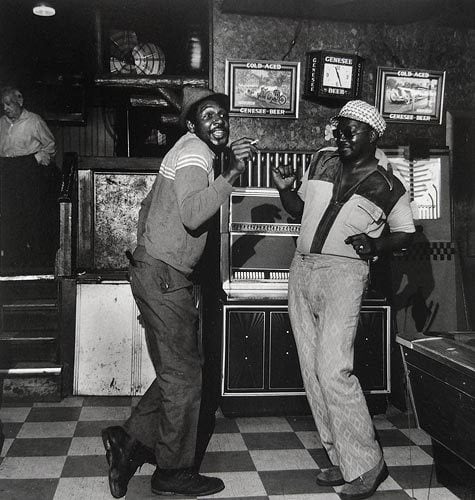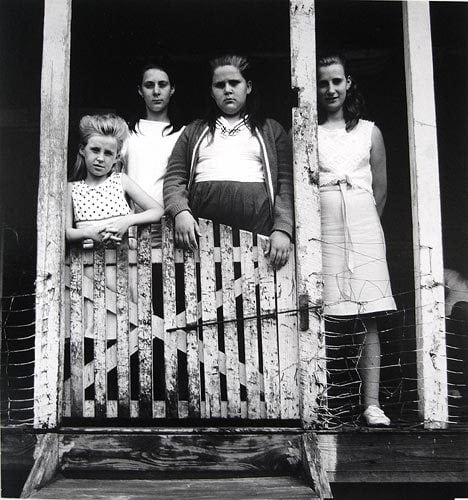Milton Rogovin was born in New York City in 1909. He graduated from Columbia University with a degree in optometry and a deep concern for workers' rights. In 1938 he moved to Buffalo where he established his own optometric practice. Four years later he married Anne Snetsky who, when not mothering their three children and working as a teacher, became Milton's full time collaborator and assistant.
In 1952, because of his interest in workers' rights and activity in what could be defined as pre-Stalinist communism, Rogovin was called before the House Un-American Activities. The Buffalo Evening News immediately labeled him "Buffalo's Top Red" and the persecution that followed significantly impacted his business and his family. Rogovin later stated that though his voice had been silenced, he would not be silenced. And so in 1958, Rogovin began making photographs that communicated his social concern. His first series was on Buffalo's black storefront churches and these images showed both the poverty and the vitality of their environment. Seen by W.E.B. Dubois, the pictures made their way to Minor White and were eventually published in Aperture Magazine in 1962.
In 1972, at the age of 63, Rogovin began to photograph Buffalo's Lower West Side. Turning up on streets ranging from blue collar family neighborhoods to places where it was dangerous to ask too many questions (the reason many of the pictures are un-named). Rogovin photographed indoors and outdoors, individuals and family groups, as he sought to convey the truth of the lives of his subjects and their environment.
Returning to this neighborhood for three decades, Rogovin created triptychs and quartets by photographing the same individuals or families with each visit. The result is a collection of photographs which provide an extraordinary look at the passage of time as well as tremendous insight into the lives of diverse ethnic groups including Puerto Rican, African American, Native American, and Italian families over the course of thirty years. Rogovin completed the Lower West Side series at the age of 92.
Rogovin's photographs are now in the permanent collections of over two dozen prominent museums around the world, including the Biblotheque Nationale in Paris, the Museum of Modern Art in New York, the J. Paul Getty Museum in Los Angeles, the Center For Creative Photography at the University of Arizona-Tucson and the Victoria and Albert Museum in London.
In 1999, the Library of Congress acquired 1,130 of Rogovin's master prints, along with his negatives and contact sheets. The irony was not lost on Rogovin that the government that persecuted him in the 1950's now celebrated his work as a champion of the poor and working class half a century later.











